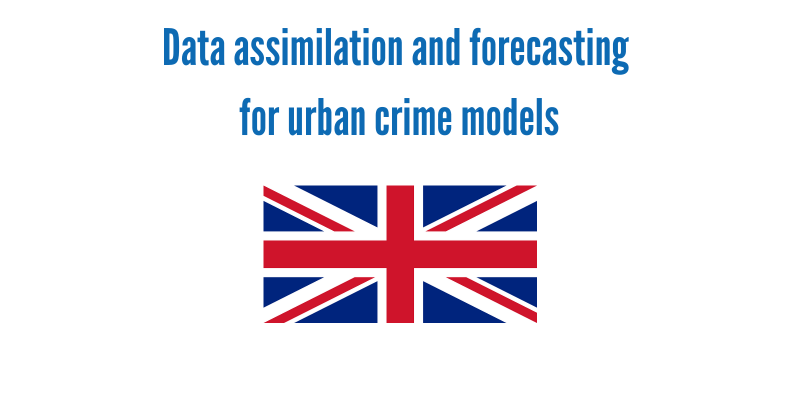
Data assimilation and forecasting for urban crime models

Date:
01/01/2017 to 31/12/2019
In recent years, a great deal of research activities associated with big data analytics of crime events and crime patterns has greatly expanded and been increasingly received attentions from practitioners and government agencies; for example, "Big data, crime and security" programme run by Parliamentary Office of Science and Technology (POST) and many crime-related projects run by the Partnership for Conflict, Crime and Security Research (PaCCS). With an availability of a large amount of crime data, there is an opportunity to transform the 'Big data' into intelligence that will aid the law enforcement in switching from the incident-oriented policing toward proactive and strategic policing, which will lead to the most effective use of resources. With the aim of understanding dynamics of crime patterns, recent mathematical research has developed several crime models such as agent-based model (ABM) for the urban burglary that incorporate well-known interactions between individual criminals and environment at the neighbourhood level. These models provide an important tool to establish the links between hypothesised criminal behaviours embedded in the models and real-world observed crime data. What is missing, however, is a novel data assimilation technique of crime data analytics that can statistically merge the model predictions with the real-world crime data in order to make better projections of future crime patterns as well as quantified the hypothesised criminal behaviour within the crime models. The primary aim of the proposed research is to develop a practical computational tool in the framework of the sequential (Bayesian) data assimilation to statistically merge complex crime models with crime data. The research holds a promise of improving a predictive distribution of the crime rate and identifying the future of crime pattern through joint state-parameter estimation. A long-term policing strategy to reduce overall crime rate would greatly benefit from such data analytic tool. A theoretical understanding of the computational method in term of stability analysis and convergence rate will be studied to gain an insight into the applicability as well as limits of the method. The proposed work will also address the challenges in making a prediction of crime patterns in a rapidly changing situation, reflected through a drastic change of model parameter values. This problem is difficult to overcome in the previous research where non-parametric estimation or maximum likelihood framework was employed since these methods require optimisation under a large volume of data altogether. The sequential data assimilation, however, fit naturally to this problem when appropriately designed. The computational tool will be applied to the real-world crime data, which is accessible via the UCL-based secure data lab. With a collaboration with Prof. Shane Johnson, a criminologist at UCL, we will determine the relevance of the results to the practical use.
Week:
Sunday, 1 January, 2017 to Tuesday, 31 December, 2019
News
On the event of the adoption of the draft regulation laying down measures for a high common level of cybersecurity at the institutions, bodies, offices and agencies of the Union, the AI4HealthSec project kicked off a process to provide its opinion.
Resources for EU Research
Resources for SMEs
News & Events
Reports
Cyberwatching.eu has received funding from the European Union’s Horizon 2020 research and innovation programme under grant agreement No 740129. The content of this website does not represent the opinion of the European Commission, and the European Commission is not responsible for any use that might be made of such content. Privacy Policy | Disclaimer / Terms and Conditions of Use
